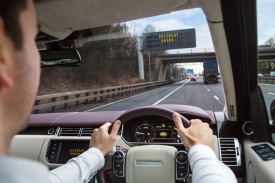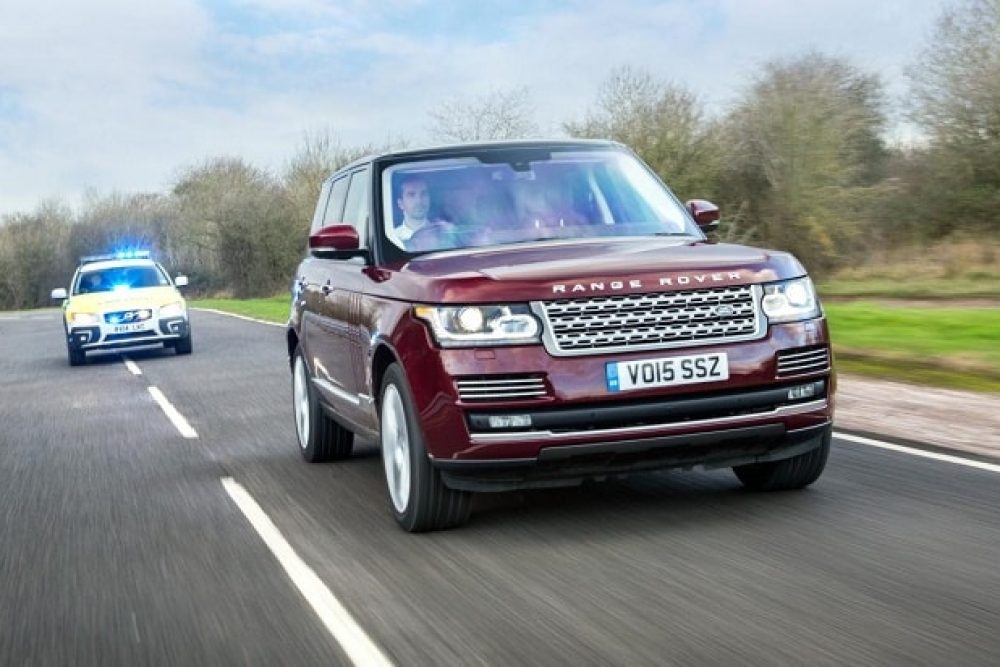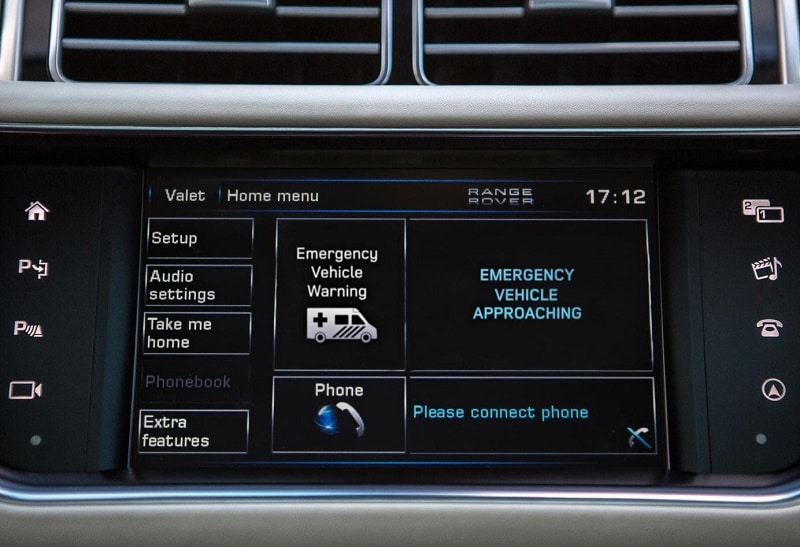Trials of connected and autonomous vehicles
- New 41-mile ‘living laboratory’ of UK roads used to test and develop next-generation connected and autonomous vehicle technologies
- Fleet of 100 ‘smart’ connected and autonomous technology research vehicles, including Jaguar and Land Rover models, will test new systems enabling cars to ‘talk’ with each other
- Car-to-car communication and ‘over-the-horizon’ warnings will make driving safer, improve journey times and prevent jams
- Car-to-car communication will allow cars to warn others. Emergency vehicles can alert drivers they are approaching
CAMOUFLAGED prototype ‘mules’ have been a familiar sight on Midlands roads for a while but now Jaguar Land Rover is starting tests of the next generation clever technology.
Using a fleet of 100 cars on a 41-mile “living laboratory”, they are evaluating new systems in Connected and Autonomous Vehicle (CAV) technologies.
The new CAV test corridor, which includes roads around Coventry and Solihull, will be used to try out new systems in real-world driving conditions.
The £5.5m ‘UK-CITE’ (UK Connected Intelligent Transport Environment) project will create the first test route capable of testing both vehicle-to-vehicle and vehicle-to-infrastructure systems on public roads in the UK. New roadside communications equipment will be installed along the route during the three-year project to enable the testing of a fleet of up to 100 connected and highly automated cars, including five Jaguar Land Rover research vehicles.
This fleet will test a range of different communication technologies that could share information at very high speeds between cars, and between cars and roadside infrastructure, including traffic lights and overhead gantries.
Government minister the Rt Hon Sajid Javid MP, Secretary of State for Business, Innovation and Skills, announced the Government’s support for the UK-CITE research with a £3.41 million grant from the UK’s innovation agency, Innovate UK, as part of the Government’s £100m Connected and Autonomous Vehicles fund.
Dr Wolfgang Epple, Jaguar Land Rover’s director of research and technology, said: “This real-life laboratory will allow Jaguar Land Rover’s research team and project partners to test new connected and autonomous vehicle technologies on five different types of roads and junctions.
“Similar research corridors already exist in other parts of Europe so this test route is exactly the sort of innovation infrastructure the UK needs to compete globally.
“The connected and autonomous vehicle features we will be testing will improve road safety, enhance the driving experience, reduce the potential for traffic jams and improve traffic flow. These technologies will also help us meet the increasing customer demand for connected services whilst on the move.”
Connected technologies are key enablers for future Intelligent Transport Systems. These would help traffic authorities monitor and manage traffic flow by capturing data from all connected vehicles and then provide the driver or autonomous car with guidance to optimise the journey.

To improve traffic flow, connected cars could co-operate and work together to make lane changing and exiting from junctions more efficient and safer. Technologies like Cooperative Adaptive Cruise Control (CACC) would enable vehicles to autonomously follow each other in close formation, known as platooning, making driving safer and ensuring road space is used more efficiently.
In the future, warning messages that are today flashed onto an overhead gantry above a road could be sent direct to the dashboard – and repeated if necessary. This would have the potential to eventually replace the overhead gantry, which each cost around £1m to install.
The Jaguar Land Rover research team will be real-world testing a range of ‘Over the Horizon’ warning systems. As well as warning drivers, these would inform future autonomous vehicles, helping them react and respond to hazards and changing traffic conditions automatically.
Dr Epple added: “A well-informed driver is a safer driver, while an autonomous vehicle will need to receive information about the driving environment ahead. The benefits of smarter vehicles communicating with each other and their surroundings include a car sending a warning that it is braking heavily or stopping in a queue of traffic or around a bend. This will enable an autonomous car to take direct action and respond. Drivers would receive a visual and audible warning that another car is causing a hazard out of sight or over the horizon.
“The approach of an emergency vehicle can often be stressful for drivers. If we can inform the driver, or the autonomous car, much earlier that an emergency vehicle is approaching, we can ensure that the best decisions are made to move the vehicle out of the way safely and conveniently, to let the emergency vehicle pass by.”
Jaguar Land Rover’s ‘Emergency Vehicle Warning’ system would identify that a connected ambulance, fire engine or police car is approaching through car-to-car communication. The driver would then receive a warning, long before flashing lights and sirens are visible or audible.
- UK-CITE consortium members include Jaguar Land Rover, Visteon, Siemens, Coventry City Council, WMG, University of Warwick, HORIBA MIRA, Coventry University, and Vodafone.








